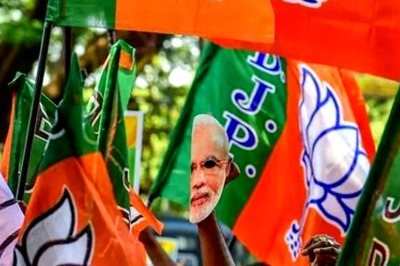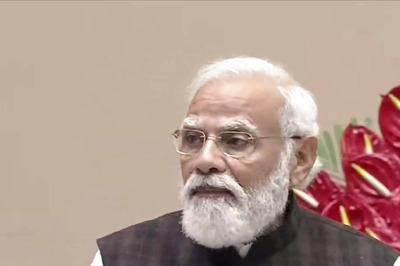
views
Mayank Pareek won't forget the crisis of 2008 in a hurry. In November that year, less than two months after the infamous Lehman Brothers crash, India's biggest passenger car maker, Maruti Suzuki, felt its blow straight in the jaw. By the end of that month, it suddenly lost a quarter of its sales compared to the previous year. December was no better. Sales fell by another 10 per cent.
By then, analysts were already predicting the end of the world. What's more, no one inside the company had witnessed a slowdown of this kind. What saved the day was that the senior team got on top of the situation with alacrity. "The slowdown forced us to do a lot of things differently that we hadn't done earlier," admits Pareek, executive director and one of the senior-most Indian executives at the Japanese multinational.
Almost on cue, Maruti's sales made a smart comeback in January, posting a 5 per cent rise. Its rivals though weren't as lucky. Their struggle lasted for six whole months.
Four years later, Pareek and his team at Maruti once again face the same prospect of slowing sales. After the heady growth rates of 20-30 per cent for the past two years, auto sales are likely to grow by just 5-10 per cent in 2012. And that's just the best case situation. If the economic turmoil in the Euro zone worsens—or the US unleashes a war on Iran, forcing oil prices to head north—there’s simply no guessing the wreckage.
Not to forget the year-long policy paralysis that has beset governance in India, held up investment and damaged investor sentiment. And so, if the UP elections throw up a hung assembly—and hurts the Congress' chances of regaining its political legitimacy, governance could once again take a back seat. Forget about the General Sales Tax (GST) and hopes of a common market, or a Direct Tax Code that brings much-needed clarity on matters of tax. In fact, it could very well spark off the prospects of even a mid-term poll.
In 2008, the crisis came without warning. This time, things have been simmering for a while. Growth rates in India have come down, capital markets remain frozen for most part and money supply has been tight. Export demand across many categories has been hurt due to the massive slowdown in the West.
On the face of it, it seems like a whole big muddle. You'd imagine CEOs of even the best run Indian companies would be worried stiff—and tentative about how to plan, amidst all the uncertainty this year. But guess what? After talking to CEOs across industries as diverse as infrastructure, retail, software, financial services, telecom, and industrial products, it is amply clear that India Inc. is fighting back.
"In a situation of adversity, your grey cells start becoming more active. When you put steel into 1,500 degrees Celsius, its molecular structure starts to change. It is the same for our brains," says Ajay Shriram, chairman and senior managing director, DCM Shriram Consolidated, a company which makes industrial intermediates.
As businesses hunker down to deal with the tough times, the next few months will prove whether they've indeed learnt the lessons from the 2008 slowdown. For the moment, let's look at the range of interventions that they have up their sleeve.
Stress-Test Your Growth Assumption
At this year's Auto Expo in the capital, Pawan Goenka didn't just spend time examining the shiny, new cars on display; he also spent considerable time chatting up his rivals on how they saw the year ahead. What the president of M&M's automotive and farm equipment division heard merely confirmed what his own team had told him. Expect no more than 5-6 per cent growth in the first half of the year and about 8-10 per cent in the second half. That seemed to make sense, except that the Society of Indian Automobile Manufacturers (SIAM), which M&M was part of, seemed to be a lot more bullish. It predicted a 12 percent growth in sales across the year in its report released at the Auto Expo.
That's when Goenka took an unusual step. In normal course, M&M would have completed its budgeting exercise for the year by January. Goenka decided to take a rain-check. "We've pushed back our budgeting exercise by a few weeks to February," he says. In the interim, his teams will re-validate their growth hypothesis all over again, so that their forecasts are a lot more robust. Part of that will mean carefully studying the SIAM report, which bases its projections on industry-wide data.




















Comments
0 comment